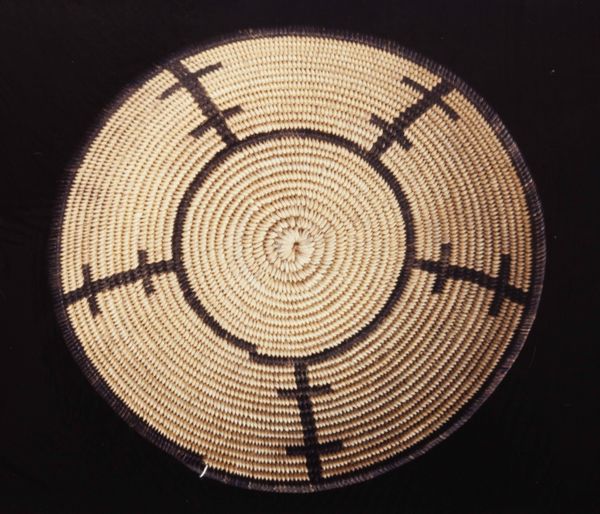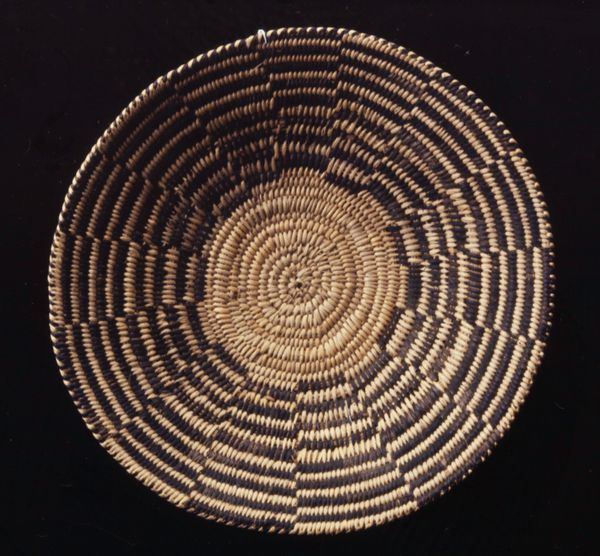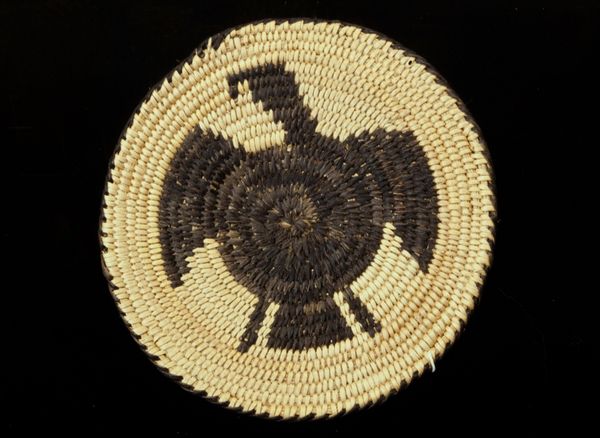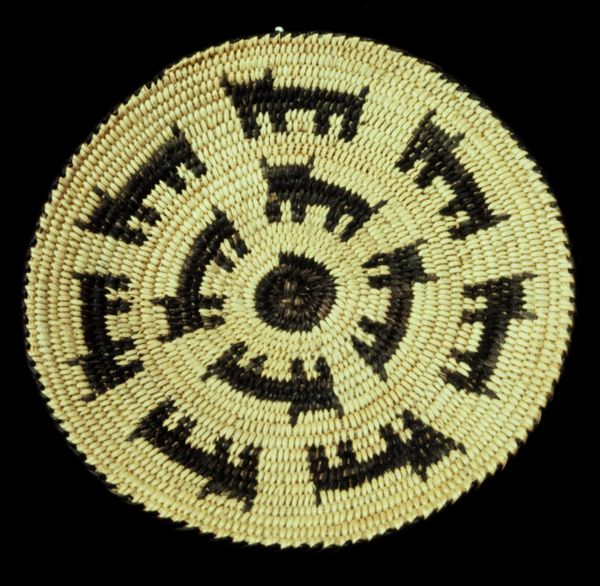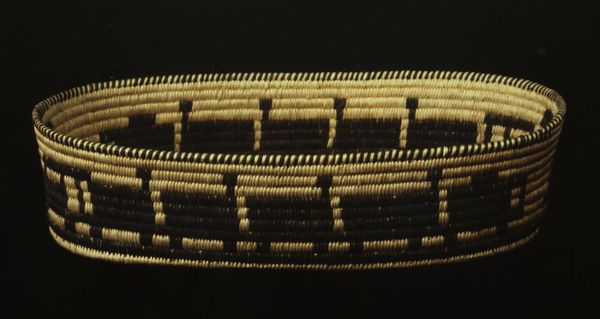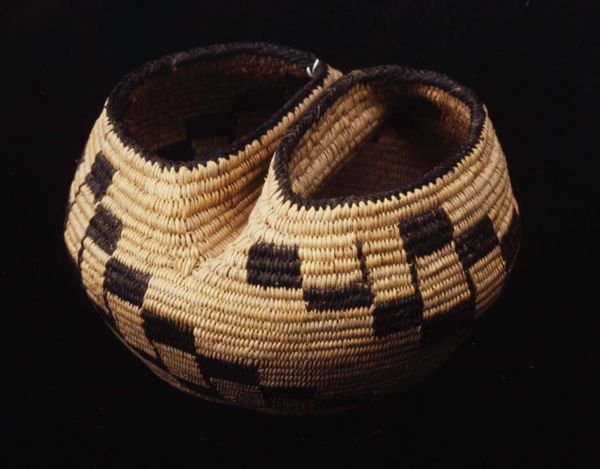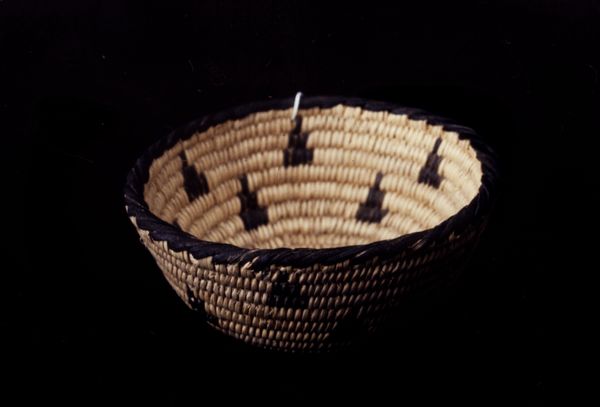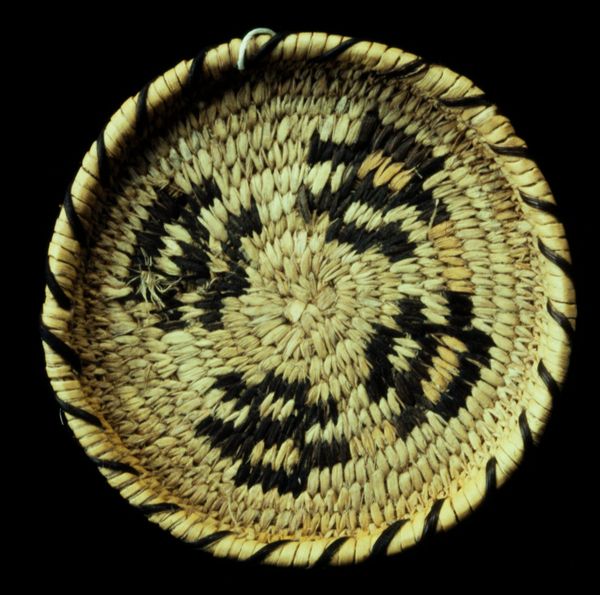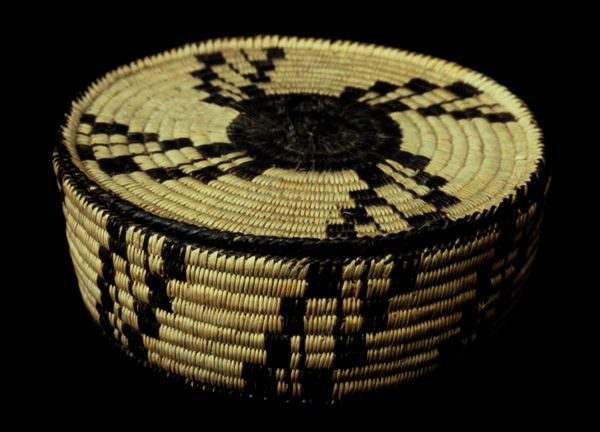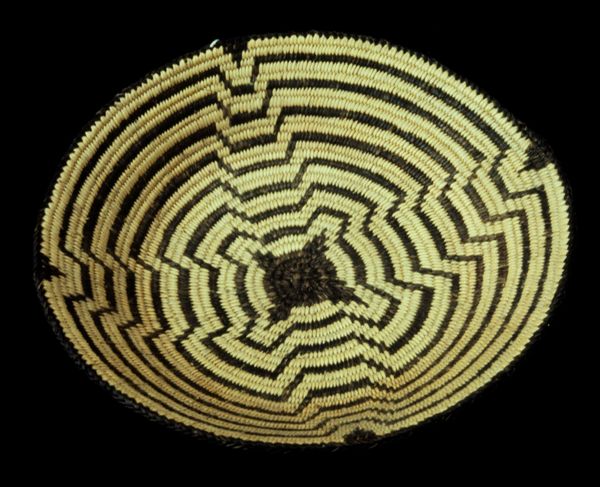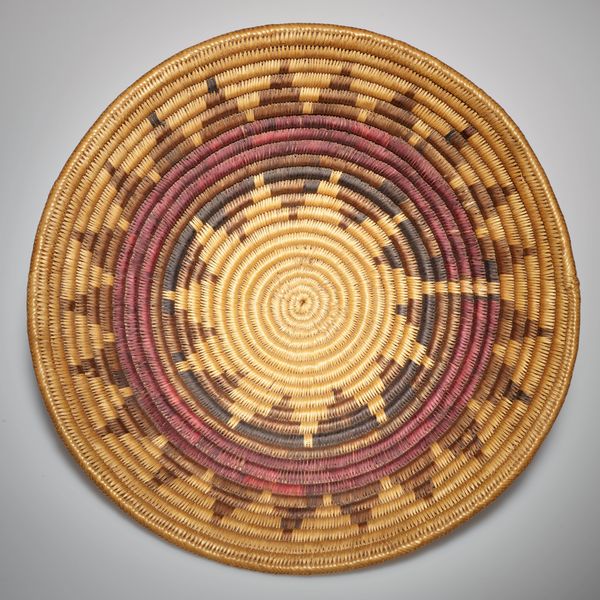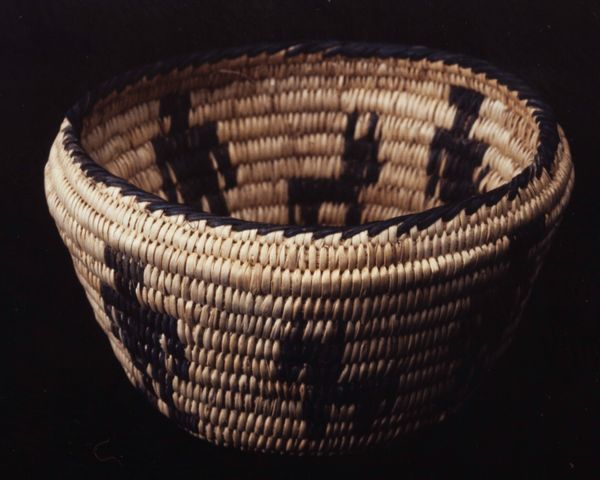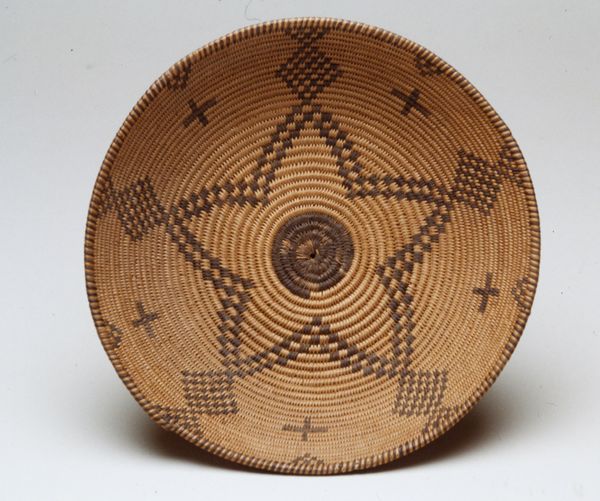
fibre-art, weaving, textile
#
fibre-art
#
sculpture
#
weaving
#
textile
#
geometric
#
indigenous-americas
Dimensions: 3 1/2 x 3 1/2in. (8.9 x 8.9cm)
Copyright: Public Domain
Editor: Here we have a "Basket," created around the 20th century by the Tohono O’odham, also known as the Papago people. It's crafted from fiber and has an immediate visual impact through its radial symmetry and geometric pattern. How do you interpret this work, thinking about its context? Curator: It’s easy to admire the craft, but we should also consider the basket in terms of cultural resilience. The Tohono O'odham have faced significant disruption to their traditional way of life. These baskets aren't just decorative objects; they’re powerful assertions of identity, continuing a practice despite external pressures to assimilate. Do you notice the symbolism embedded within the pattern itself? Editor: I see a central dark circle, then radiating lines of black squares, which are echoed and then repeated concentrically. Is it tied to cultural narratives, maybe a cosmology? Curator: Precisely. For many Indigenous cultures, geometric patterns are rarely just decorative; they can represent origin stories, connections to the land, or spiritual beliefs. In the face of settler colonialism, the act of continuing these traditions, encoding ancestral knowledge within the form, becomes an act of resistance and self-determination. Consider that. Editor: It reframes the way I see the piece, beyond its mere functionality. It gives it agency. Thank you for emphasizing its connection to community and cultural endurance. Curator: Exactly, understanding that relationship—art as both a carrier of memory and a shield against erasure—adds immeasurable depth to appreciating this "Basket."
Comments
No comments
Be the first to comment and join the conversation on the ultimate creative platform.
